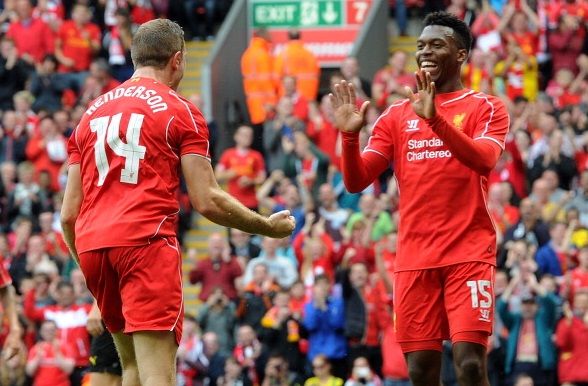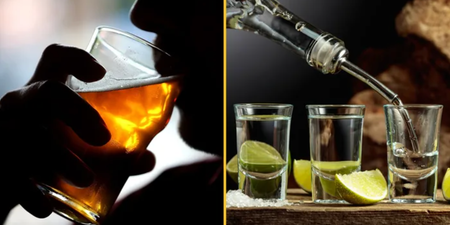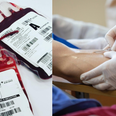For anyone interested in why certain players on their favourite teams are always injured, this is interesting.
Paul Smith is Performance Coach with Wexford Youths, works with Ireland’s Under-16 basketball team and mentors athletes to ensure that their physical conditioning stays at a premium level.
He spoke to JOE about the importance of fundamental movement patterns in pre-teenagers, why certain football players may get injured more than others, and the most common ailments he comes across on a day-to-day basis.
JOE: Can you look at certain injury-prone players, like Daniel Sturridge at Liverpool, for instance, and understand why they’re always in the treatment room?
Paul Smith: It’s difficult from a distance to look at players. You can look at the style, change of direction, short and sharp acceleration means they’re at risk of hamstring injuries. It’s hard to look at Arsenal and know why they get so many injuries, and the media don’t know the training and conditioning.
Look at the amount of time Arsenal are on the ball and that will impact on a team’s injury count. If you went back 20 years you could see players who aren’t in the best of shape, but now they’re all in contention.
With Sturridge, it’s very common to see re-injury after some of the problems he’s had, but you can’t tell a lot from looking at the TV because you’re only seeing small snippets from different angles.
Do you solely work with high level athletes or do you work with people who take part in sport on a more casual basis?
The majority of work I do is at the elite end, although the people are not always professionals. I work with the Irish Under-16 basketball team, with Wexford Youths who have just been promoted to the Premier Division of the League of Ireland, and with various athletes of different ages.
We’ve also been working with primary schools, we’re trying to feed down our learnings from elite performers to younger students. Trying to get them to improve the fundamental movement that will help them later in life. It’s very important because the work you do with children in fifth and sixth class will benefit them the older they get.
Tell us about fundamental movement patterns, and the crucial role they play in people’s everyday lives…
A person’s fundamental movement patterns underpin everything they ever do. If you have asymmetries in your fundamental movement, i.e. if you have a problem with your right hip, that will affect how you move, sit, everything. We try to help with that fundamental movement.
It can be a long process – if people go back on the pitch or lift weights without that fundamental movement, they’re very often going to have problems down the road.
The majority of people go through their life without thinking about their fundamental movement, but it becomes more apparent how poor their movement is the older they get.
With the physical literacy programme that I do, I’m trying to help teachers plan lessons where they can help children have better fundamental movement in their early years, which is very important.
In terms of conditioning, what do you tell your clients is the best way to keep playing at the top level? For instance, do you get involved in nutrition?
I’m about to start my fourth season with Wexford Youths and my role has got bigger. I have two people with me and we try to provide a complete sports science.
We do close season testing, strength and power work, match fitness work, injury prevention, nutrition, recovery – this is all in the winter months, out of competition.
In season we continue with that – we do a pitch-based fitness session once a week and we try to tailor exercises to individual players. We try to develop ‘soccer-specific’ strength. When we’re not with the players we try to help them as much as we can with nutrition plans, and directions and home programmes on what they can do when they’re not with the club.
What are the most common injuries you come across in football?
The most common injury is the hamstring, then the ankle, knee and groin.
Which injuries are the hardest for players to come back from?
The major injuries – the ACL is typically eight to nine months of rehab from surgery. Then there are fractures, Achilles tendon ruptures are usually six months.

The hamstring is a big problem because once someone has a hamstring tear it’s very hard to get to a point where it doesn’t happen again. The hamstring is the most frustrating injury to deal with.
Where does the coaching part of your job come in, and would you have ambitions to be a full-time coach or manager?
No, not the management side.
Full-time in terms of strength or conditioning, yes, and I do have some qualifications. Primarily my role is strength and conditioning and that’s where I want to further my career.
Science Week takes place from 8-15th November 2015. This is Science Week’s 20th birthday, and the theme for this year is Science Week 2.0 – Design Your Future. Over the course of the week, there will be 800 events held nationwide including Robot Soccer in NUIM and Bend It Like Beckham in GMIT Castlebar, with a participating audience of 250,000. For events in your area, check out www.science.ie
LISTEN: You Must Be Jokin’ with Aideen McQueen – Faith healers, Coolock craic and Gigging as Gaeilge
























































